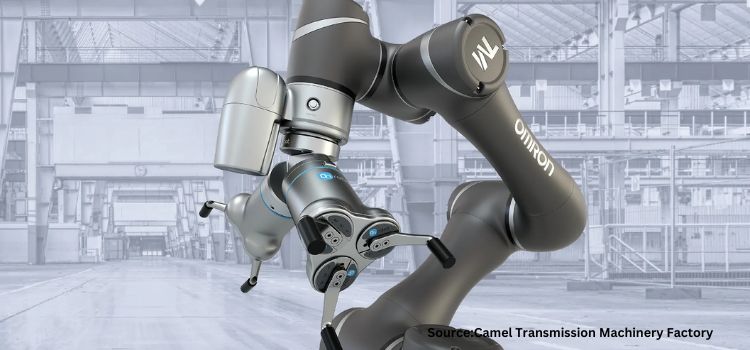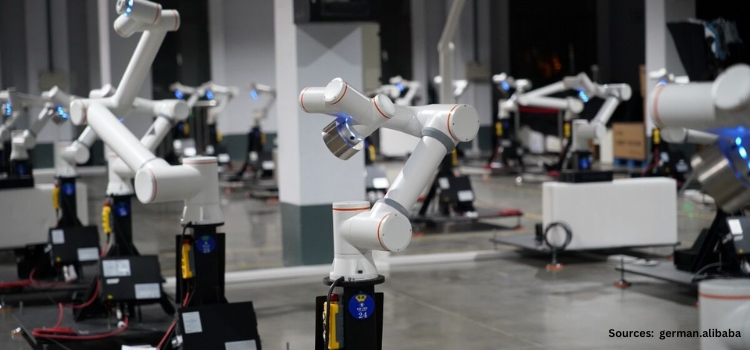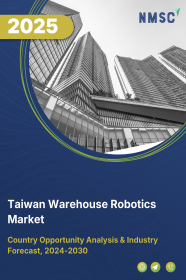
Taiwan Warehouse Robotics Market by Type (Automated Guided Vehicles (AGVs), Autonomous Mobile Robots (AMRs), Articulated Robots, & Others), by Offering (Hardware, Software, & Services), by Payload Capacity (Less than 100 KG, 101-200 KG, 201-500 KG, & Others), by Application (Palletizing and Depalletizing, Sorting and Packaging, Picking and Placing, & Transportation) and by End-User (E-commerce, Automotive, Food & Beverages, & Others) – Opportunity Analysis and Industry Forecast, 2025–2030
Industry: Semiconductor & Electronics | Publish Date: 08-Apr-2025 | No of Pages: 211 | No. of Tables: 170 | No. of Figures: 123 | Format: PDF | Report Code : SE3180
US Tariff Impact on Taiwan Warehouse Robotics Market
Trump Tariffs Are Reshaping Global Business
Taiwan Warehouse Robotics Market Overview
The Taiwan Warehouse Robotics Market size was valued at USD 117.9 million in 2024, and is predicted to reach USD 302.9 million by 2030, at a CAGR of 16.0% from 2025 to 2030.In terms of volume, the market size was 5.89 thousand units in 2024 and is projected to reach 16.20 thousand units by 2030, with a CAGR of 17.2% from 2025 to 2030
Taiwan’s adapted to automated programs as there is shortage of labors due to maximum population growing old which allows to propels the market growth and also expansion of the e-commerce industry acts as a driver for warehouse rrobotics mmarket. Automated functions such as robotic pickers, automated guided vehicles, and autonomous mobile robots help to bridge the labour gaps by managing inventory management, order fulfilment, and material management. However, due to high investment costs related with robotics is one of the important factors restraining the growth limit the widespread movement of warehouse robotics, reducing overall market growth.
Increase in E-Commerce Propels the Taiwan Warehouse Robotics Market Growth
The fast expansion of e-commerce sector is demanding the need for quicker, more efficient logistics and fulfilment solutions. According to the growing customer expectations for quick deliveries and smoother order processing, companies are combining warehouse robotics to improve operational efficiency, reduce labour costs, and improve inventory management. According to latest report by ITA, recent data, Taiwan's e-commerce market in 2022 generated over approximately USD 200 billion, with a growth rate of 10.95% and a market size reaching around USD 16.1 billion. This shift is driving significant investments in automation technologies, making warehouse robotics a crucial component of Taiwan’s evolving logistics landscape.
Automated Solutions Due to Shortage of Workforce Drives the Growth of the Market
Taiwan logistics and warehousing sector demand is facing labour shortages due to an aging workforce and a decline in interest in physically demanding jobs. Automated solutions such as robotic pickers, automated guided vehicles, and autonomous mobile robots help mitigate labour gaps by smoother inventory management, order fulfilment, and material handling. According to Taiwan's Ministry of Labor shows a massive workforce shortage among mid-level skilled workers, with a survey reporting over 66,000 job vacancies. Of these, approximately 40,000 falls under "skill level 2" occupations, underscoring the high demand for mid-level workers across various industries. The growing reliance on robotic automation not only addresses workforce constraints but also enhances productivity and reduces operational costs, fueling the expansion of the warehouse robotics market in Taiwan.
High Investment Costs Associated with Robotics Restraints the Market Growth
The adoption of warehouse robotics faces massive challenges due to the high investment costs connected with robotic systems, software integration, and necessary infrastructure upgrades. These costs create a substantial cost restrain, particularly for small and medium-sized enterprises, which form the backbone of supply chain sector. Unlike large corporations with larger financial ease, SMEs often allowed to work with less finances, which makes it difficult for SMEs to manage the substantial expenditure required for robotic automation. This financial constraint limits technological advancements in warehouse operations and poses a significant hurdle to the Taiwan warehouse rrobotics market trends.
Introduction of Artificial Intelligence Creates Future Option for the Market
The addition of artificial intelligence in warehouse robotics is expected to play a major role allowing growth opportunity for the market in the future. AI induced solutions improves decision making, optimize inventory management and improve the accuracy and speed of operations that helps warehouses to become more accurate and adaptable. As such in January 2025, Nvidia disclosed new AI development tools aimed at improving the potential of autonomous robots and vehicles. These models are mad to create synthetic data and simulate physical interactions, allowing developers to create designed templates for testing their AI systems before real-world. These progresses will focus on the transformative potential of AI in warehouse robotics, paving the way for smarter, more lively and highly efficient warehouse operations that meet the future demands of modern supply chains.
Competitive Landscape
The promising players operating in the Taiwan warehouse rrobotics industry ABB Ltd., Omron Corporation, KUKA AG, Fanuc Corporation, Teradyne Inc., Zebra Technologies, Dematic, Daifuku Co., Ltd., Murata Machinery Ltd., YASKAWA ELECTRIC CORPORATION, Toshiba Corporation, SSI Schaefer, Cimcorp and others.
Taiwan Warehouse Robotics Market Key Segments
By Types
-
Automated Guided Vehicles (AGVs)
-
Laser Guidance
-
Magnetic Guidance
-
Optical Tape Guidance
-
Vision Guidance
-
Others
-
-
Autonomous Mobile Robots (AMRs)
-
Tow Vehicle
-
Tug Vehicle
-
Unit Load Vehicle
-
Pallet Truck
-
Forklift Vehicle
-
Other Type
-
-
Articulated Robots
-
Collaborative Robots
-
Scara Robots and Cylindrical Robots
-
Others
By Offering
-
Hardware
-
Software
-
Warehouse Management System (WMS)
-
Warehouse Execution System (WES)
-
Warehouse Control System (WCS)
-
-
Services
By Payload Capacity
-
≤ 100 KG
-
101-200 KG
-
201-500 KG
-
501-1000 KG
-
1001-2000 KG
-
2001-5000K
-
More than 5000 KG
By Application
-
Palletizing and depalletizing
-
Sorting and Packaging
-
Picking and Placing
-
Transportation
By End User
-
E-commerce
-
Automotive
-
Food & Beverages
-
Pharmaceutical
-
Chemical and Materials
-
Semiconductor and Electronics
-
Others
Key Players
-
ABB Ltd.
-
Omron Corporation
-
KUKA AG
-
Fanuc Corporation
-
Teradyne Inc.
-
Zebra Technologies
-
Dematic
-
Daifuku Co., Ltd.
-
Murata Machinery, Ltd.
-
YASKAWA ELECTRIC CORPORATION
-
Toshiba Corporation
-
SSI Schaefer
-
Cimcorp
REPORT SCOPE AND SEGMENTATION:
|
Parameters |
Details |
|
Market Size Value in 2024 |
USD 117.9 million |
|
Revenue Forecast in 2030 |
USD 302.9 million |
|
Value Growth Rate |
CAGR of 16.0% from 2025 to 2030 |
|
Market Volume in 2024 |
5.89 thousand units |
|
Unit Forecast in 2030 |
16.20 thousand units |
|
Value Growth Rate |
CAGR of 17.2% from 2025 to 2030 |
|
Analysis Period |
2024–2030 |
|
Base Year Considered |
2024 |
|
Forecast Period |
2025–2030 |
|
Market Size Estimation |
Million (USD) |
|
Market Volume Estimation |
Thousand units |
|
Growth Factors |
|
|
Companies Profiled |
13 |
|
Market Share |
Available for 10 companies |
|
Customization Scope |
Free customization (equivalent up to 80 working hours of analysts) after purchase. Addition or alteration to country, regional, and segment scope. |
|
Pricing and Purchase Options |
Avail customized purchase options to meet your exact research needs. |








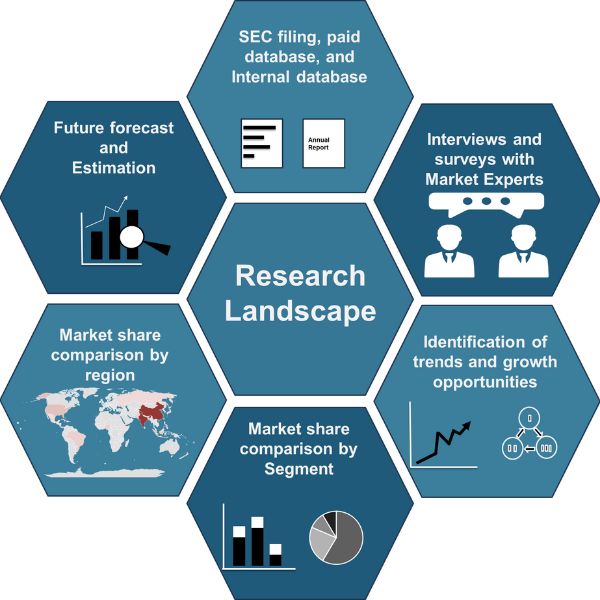





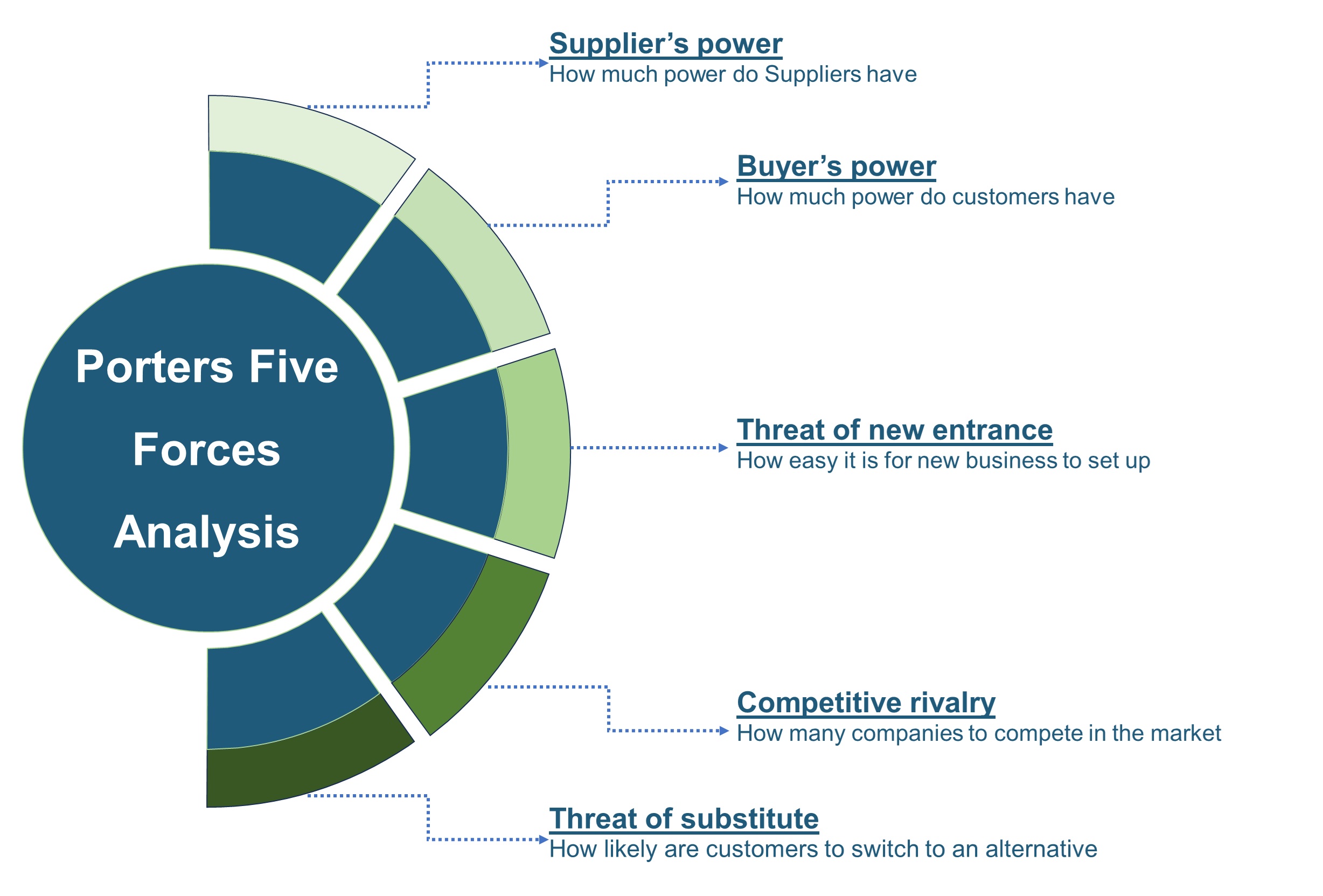

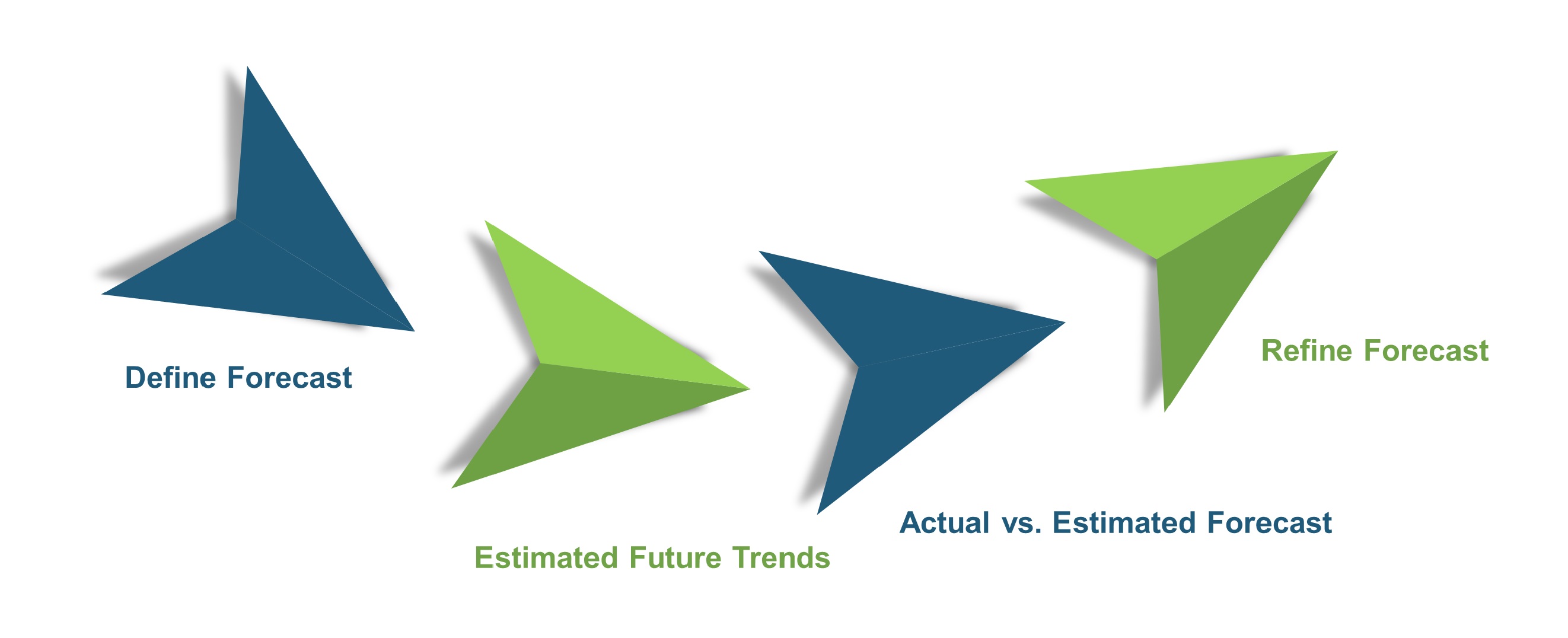
 Speak to Our Analyst
Speak to Our Analyst






